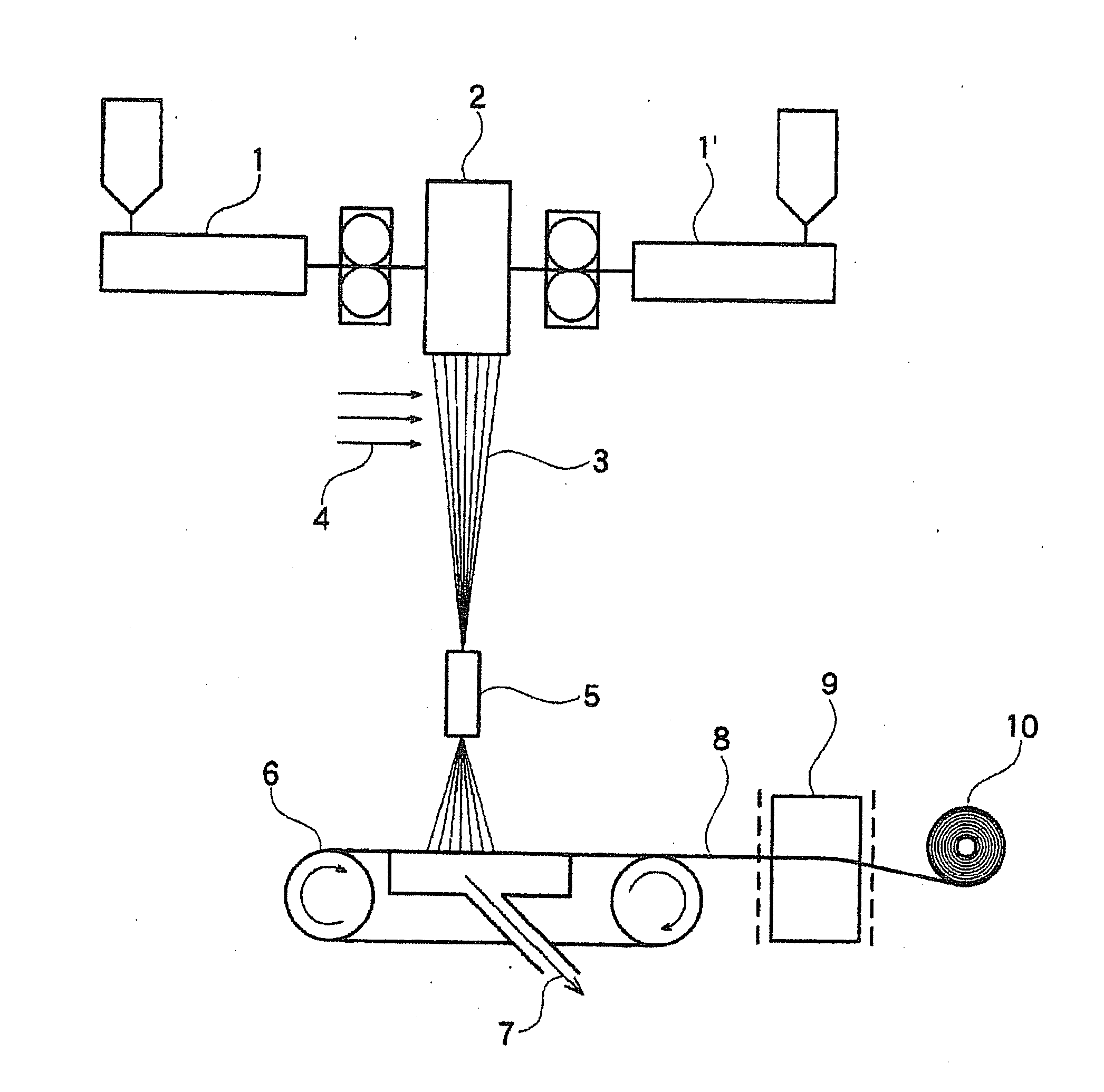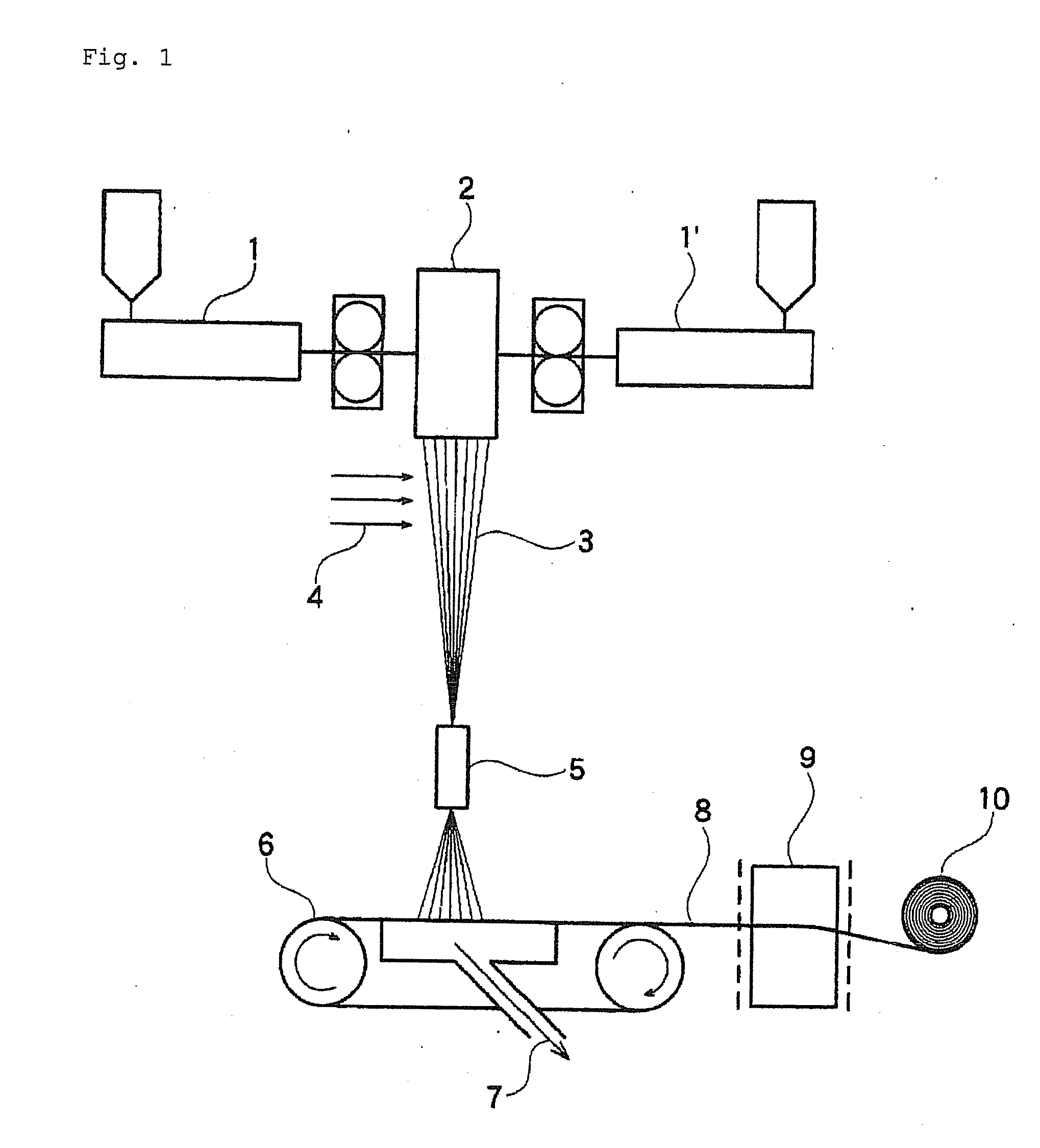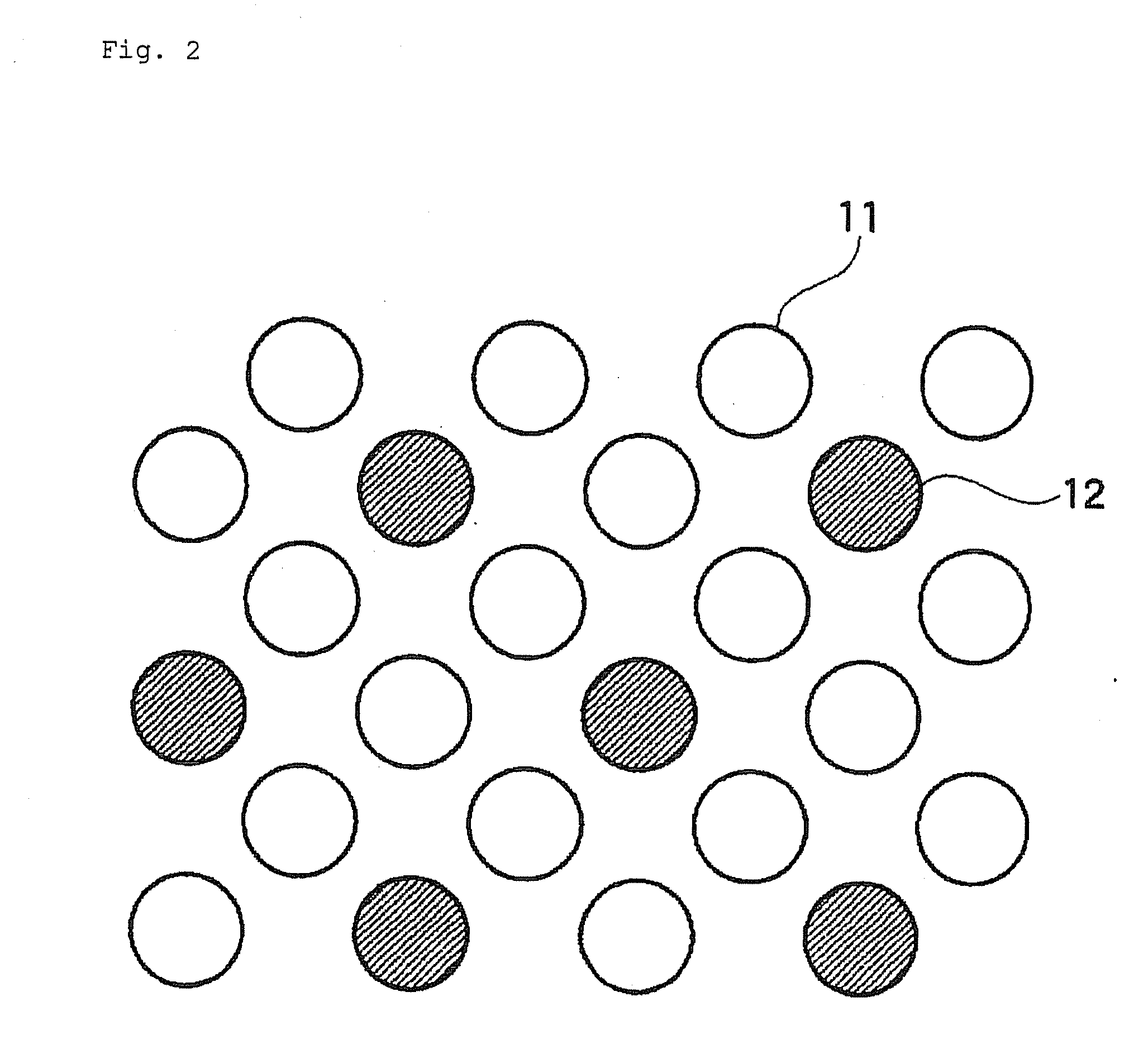Polypropylene Nonwoven Fabric and Use Thereof
a non-woven fabric and polypropylene technology, applied in the field of non-woven fabrics, can solve the problems of high rigidity, insufficient stretch properties, and inability to use non-woven fabrics composed of polypropylene in the field requiring stretch properties, and achieve excellent surface appearance and stretch properties, and small residual strain
- Summary
- Abstract
- Description
- Claims
- Application Information
AI Technical Summary
Benefits of technology
Problems solved by technology
Method used
Image
Examples
synthesis example 1
[0107] (Synthesis of a propylene / ethylene / butene copolymer, PEB-1)
[0108] Into a 2000 ml polymerization apparatus sufficiently purged with nitrogen were introduced 833 ml of dry hexane, 100 g of 1-butene and triisobutylaluminum (1.0 mmole) at room temperature, and then the internal temperature of the polymerization apparatus was elevated to 40° C. Propylene was introduced for pressurizing the system such that the pressure inside the system became 0.76 MPa, and then ethylene was introduced for adjusting the pressure inside the system to be 0.8 MPa.
[0109] Then, a toluene solution containing 0.001 mmole of dimethylmethylene (3-tert-butyl-5-methylcyclopentadienyl)fluorenyl zirconium dichloride and methylaluminoxane (a product of Tosoh Finechem Corporation) of 0.3 mmole in terms of aluminum were added to the polymerization apparatus. The resultant mixture was polymerized for 20 minutes while maintaining the internal temperature of 40° C. and the pressure inside the system of 0.8 MPa by ...
synthesis examples 2 to 7
[0111] The partial pressure of each monomer was regulated in the same manner as in Synthesis Example 1 to change the content of the constituent monomer to obtain a propylene based resin composition (Table 1) (PEB-2, PEB-3, PEB-4, PE-5, PEB-6).
TABLE 1PropyleneEthylene1-buteneIntrinsicMFRcontentcontentcontentviscosity(g / 10(mole %)(mole %)(mole %)dl / gminutes)PEB-175.017.0 8.01.818PEB-268.013.019.01.887PEB-345.025.030.01.6614PEB-465.010.025.01.7210PE-580.020.0—2.042PEB-670.05.025.01.759
synthesis example 8
(Synthesis of an ethylene / 1-butene copolymer, EB-9)
[0112] An ethylene / 1-butene copolymer (EB-9) was prepared according to the following method.
[0113]
[0114] 18.4 mg of triphenylcarbenium (tetrakispentafluorophenyl)borate was employed and 5 ml of toluene was added thereto for dissolving the mixture and regulating a toluene solution with a concentration of 0.004 mmole / ml. Further, 1.8 mg of [dimethyl(t-butylamide)(tetramethyl-η5-cyclopentadienyl)silane]titanium dichloride was employed and 5 ml of toluene was added thereto for dissolving the mixture and regulating a toluene solution with a concentration of 0.001 mmole / ml.
[0115] Upon initiation of polymerization, 0.38 ml of a toluene solution of triphenylcarbenium (tetrakispentafluorophenyl) borate and 0.38 ml of a toluene solution of [dimethyl(t-butylamide)(tetramethyl-η5-cyclopentadienyl)silane]titanium dichloride were employed, and 4.24 ml of toluene for diluting was further added thereto. 5 ml of the toluene solution was regulated...
PUM
| Property | Measurement | Unit |
|---|---|---|
| melting point | aaaaa | aaaaa |
| melting point | aaaaa | aaaaa |
| melting point | aaaaa | aaaaa |
Abstract
Description
Claims
Application Information
 Login to View More
Login to View More - R&D
- Intellectual Property
- Life Sciences
- Materials
- Tech Scout
- Unparalleled Data Quality
- Higher Quality Content
- 60% Fewer Hallucinations
Browse by: Latest US Patents, China's latest patents, Technical Efficacy Thesaurus, Application Domain, Technology Topic, Popular Technical Reports.
© 2025 PatSnap. All rights reserved.Legal|Privacy policy|Modern Slavery Act Transparency Statement|Sitemap|About US| Contact US: help@patsnap.com



